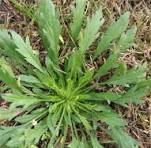
Introduction:
Marestail (Conyza canadensis), also known as horseweed, is a troublesome weed that can significantly impact soybean crops. This article explores the challenges posed by Marestail in soybean fields and discusses effective strategies for its control to ensure optimal soybean yield and quality. Marestail weed
Challenges of Marestail in Soybeans:
-
Rapid Growth and Seed Production:
- Marestail is known for its rapid growth and prolific seed production, making it a resilient competitor in soybean fields.
- A single Marestail plant can produce thousands of seeds, contributing to its persistent presence.
-
Herbicide Resistance:
- Some populations of Marestail have developed resistance to certain herbicides, including glyphosate.
- Herbicide-resistant Marestail requires strategic management to avoid further resistance development.
Integrated Weed Management (IWM) Approach:
-
Early Detection and Monitoring:
- Regular field scouting and early detection of Marestail are crucial for implementing timely control measures.
- Identifying Marestail when it is in its early growth stages enhances the effectiveness of management strategies.
-
Cultural Practices:
- Practices such as crop rotation and maintaining optimal planting density can help reduce Marestail pressure in soybean fields.
- Crop rotation disrupts the weed's life cycle, while proper planting density promotes crop competition against weeds.
Herbicide Strategies:
-
Pre-emergence Herbicides:
- Pre-emergence herbicides, applied before Marestail germination, provide a crucial first line of defense.
- These herbicides create a barrier in the soil to prevent weed emergence and establishment.
-
Post-emergence Herbicides:
- Selective post-emergence herbicides are essential for controlling emerged Marestail plants without harming soybeans.
- Herbicides containing dicamba, 2,4-D, or other effective ingredients can be used for targeted applications.
-
Herbicide Rotation and Tank Mixtures:
- To combat herbicide-resistant Marestail, it's crucial to rotate herbicides with different modes of action.
- Tank mixtures combining multiple herbicides can enhance efficacy and prevent resistance development.
Environmental Considerations:
-
Adjuvants and Application Timing:
- The use of adjuvants and applying herbicides at the right timing improves herbicide efficacy.
- Follow product labels for recommended adjuvants and application instructions.
-
Cover Crops:
- Planting cover crops during fallow periods can help suppress Marestail growth and reduce soil erosion.
- Cover crops also enhance soil health and structure. cymbidium orchid
Biological Control:
- Beneficial Insects:
- Encouraging the presence of beneficial insects, such as predatory beetles and insects that feed on Marestail, can contribute to natural control.
- Biological control is a sustainable approach within an integrated weed management system.
Conclusion:
Effectively managing Marestail in soybeans requires a comprehensive and adaptable approach. Integrating cultural practices, diverse herbicide strategies, and considering environmental factors contribute to a successful weed management plan. Early detection, vigilant monitoring, and a commitment to sustainable practices are essential components of a holistic approach that aims to mitigate the challenges posed by Marestail, ensuring the vitality and productivity of soybean crops.


No comments yet